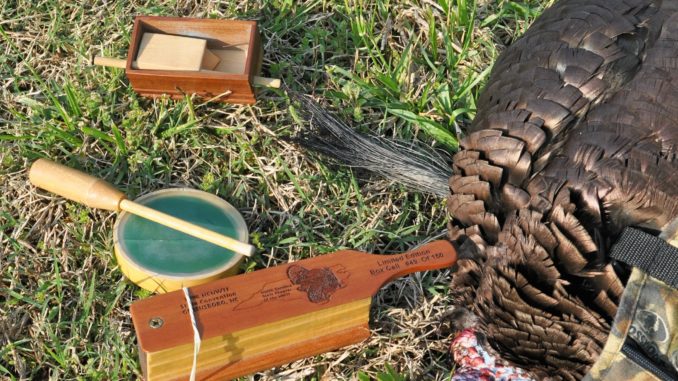
Guide Clark Purvis, who called 16 gobblers to hunters during the 2012 spring season, said he prefers a Don Carter double-reed mouth call, but the frequency and loudness of calls depends upon what a hunter hears before he makes the first sound.
“(Calling) depends on a combination of factors, including how much I hear (a gobbler) on the roost, and once he hits the ground, how much he calls,” he said.
If he’s almost sure a gobbler is roosting at a given area, Purvis said he’ll often produce a lonesome hen call once every 10 minutes, hoping for a response.
“You don’t want to call too much or too loud,” he said.
When he determines a gobbler is coming toward him, he changes to purrs.
“I never ‘call’ at a bird if he’s coming toward me,” he said.
Purvis doesn’t make a sound if a gobbler stops walking toward him and begins to bob its head, showing wariness. If a bird begins to walk away, he will purr again. Often, the gobbler will return.
“A purr from my mouth call is the last thing I want a gobbler to hear,” he said.
Purvis said one of the best ways to learn about turkey calling is to attend or enter a calling contest.
“People are friendly,” Purvis said. “They network and don’t mind telling you about turkey calling.”




Be the first to comment